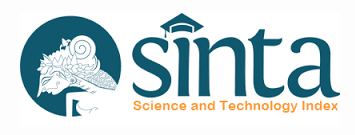KONSTRUKSI SOSIAL DA'I SUMENEP ATAS PERJODOHAN DINI DI SUMENEP
Abstrak
The early marriage is a classic discourse that has been pro-contra in the Madura people, both socially and culturally. Although, when referring to Islamic teachings, this early marriage does not violate the norms in Islamic teachings. The Madura people, especially Sumenep, views the early marriage as a culture that must be preserved. Because in Islam itself there is no Qur'anic argument or hadith that regulates the age of marriage. This reality seems to be a challenge for the da'i to answer the possibility of this early marriage.
This study uses descriptive-qualitative research with the sociological approach of Peter L. Berger's social construction theory. The focus of this research is how the social construction of Sumenep over premature marriage.
Referensi
Berger, Peter L. & Thomas Luckmann. Tafsir Sosial atas Kenyataan: Risalah tentang Sosiologi Pengetahuan (diterjemahkan dari buku asli The Sosial Construction of Reality oleh Hasan Basari), Jakarta: LP3ES, 1990.
Berger, Peter L. & Thomas Luckmann. Langit Suci: Agama sebagai Realitas Sosial (diterjemahkan dari buku asli Sacred Canopy oleh Hartono), Jakarta: Pustaka LP3ES, 1994.
H. J Wibowo, Ambar Andrianto dkk. Tatakrama Suku Bangsa Madura, Yogyakarta: Badan Pengembangan Kebudayaan dan Pariwisata Diputi Bidang Pelestarian dan Pengembangan Budaya Balai Kajian Sejarah dan Nilai Tradisional Yogyakarta Proyek Pemanfaatan Kebudayaan Daerah Istimewa Yogyakarta, 2002.
Karisyati, Septi. Tradisi Bhekal Eko-akoaghi (Perjodohan Sejak dalam Kandungan) di Desa Sana Laok, Kec. Waru, Pamekasan, Madura dalam Perspektif Hukum Adat dan Hukum Islam. Dalam Skripsi, Yogyakarta: Syariah dan Hukum UIN Sunan Kalijaga, 2014.
Muhajir, Neong. Metodologi Penelitian Kualitatif, Yogyakarta: Reka Sanisin, 1996.
Mulyana, Deddy. Ilmu Komunikasi, Bandung: Remaja Rosda Karya, 2003.
Syam, Nur. Islam Pesisir, Yogyakarta: LKis Pelangi Aksara, 2005.
Zubari, Dardiri. Rahasia Perempuan Madura, Surabaya, Al-Afkar Press, 2013.
Once an article was published in the journal, the author(s) are:
granted to the journal right licensed under Creative Commons License Attribution that allows others to share the work with an acknowledgment of the work's authorship. permitted to publish their work online in third parties as it can lead to wider dissemination of the work. continue to be the copyright owner and allow the journal to publish the article with the CC BY license receiving a DOI (Digital Object Identifier) of the work.





